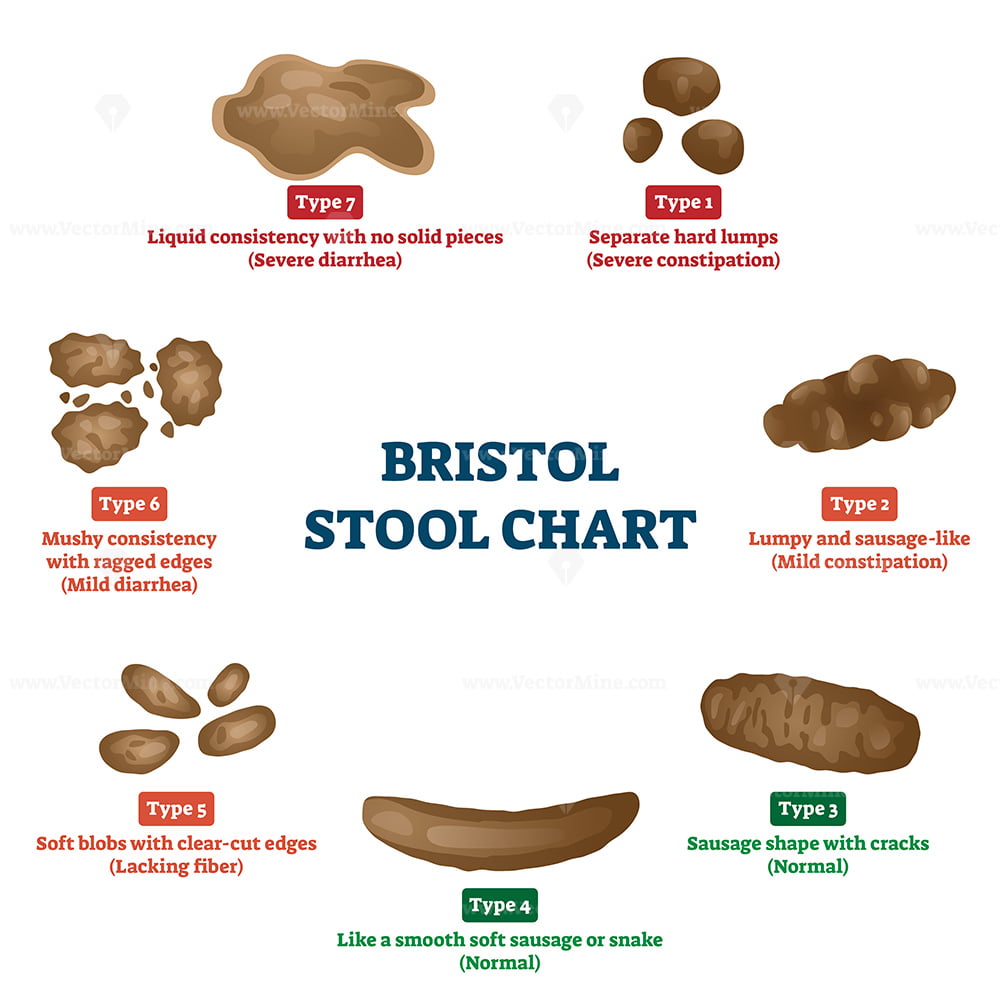Simple high resolution Bristol stool chart, 7 type classification, vector illustration
€7.99
This product includes:
1. Editable Vector .AI file
Compatibility:
Adobe Illustrator CC
Includes Editable Text Font SuezOne (Under Free Open Font License)
2. Editable Vector .EPS-10 file
Compatibility:
Most Vector Editing Software
3. High-resolution JPG image
4000 x 4000 px
License terms in short:
Use for everything except reselling item itself.
Read a full license here
The Bristol Stool Chart stands as a critical diagnostic tool, intricately designed as a vector illustration to offer a high-resolution categorization of feces types, spanning the spectrum from hard to soft consistencies. This chart is indispensable in the realm of medical diagnostics, providing healthcare professionals with a precise framework to identify a broad range of bowel-related issues, including but not limited to, indicators of a healthy bowel system and signs symptomatic of conditions such as Irritable Bowel Syndrome (IBS).
Structured to define seven distinct stool types, the Bristol Stool Chart serves as a comprehensive guide. It begins with Type 1: separate hard lumps, akin to nuts, which are tough to pass and signify constipation. This condition may lead to less frequent bowel movements, occurring just a few times over a week. Following this, Type 2 consists of sausage-shaped but lumpy stools, which, while slightly easier to pass than Type 1, still indicate a form of constipation. These early types often appear darker due to the extended time food spends traversing the digestive tract, leading to the colon absorbing more water than usual.
To address such conditions and improve bowel health, several strategies are recommended. These include increasing dietary fiber intake to help soften stools and facilitate their passage, ensuring adequate hydration to prevent the stools from becoming too hard, engaging in regular physical exercise to improve overall digestive function, and considering bowel training practices to establish more regular bowel habits. In certain cases, the use of over-the-counter laxatives or physician-prescribed medications might be advised to aid in alleviating constipation.
On the healthier side of the spectrum, the Bristol Stool Chart identifies Types 3 through 5 as indicative of optimal bowel health and function. Type 3 stools, which are sausage-shaped with cracks on the surface, represent a normal consistency that is not too hard nor too soft. Type 4 stools are depicted as smooth, soft, and snake-like, effortlessly passed and considered the gold standard of fecal health. Type 5 consists of soft blobs with clear edges, which, while softer, should still be easy to pass and typically occur once or multiple times daily without difficulty.
Conversely, Types 6 and 7 point towards a more liquid consistency, with Type 6 presenting as fluffy pieces with ragged edges and Type 7 as entirely liquid stools, devoid of solid pieces. While these types may be passed easily, their frequent occurrence can signal diarrhea, indicating that food is moving too quickly through the digestive system, thus inhibiting proper water absorption and leading to a loose stool consistency. In these instances, maintaining hydration is paramount, and the utilization of over-the-counter antidiarrheal medications or seeking professional medical advice may be necessary, especially for persistent or chronic conditions.
The importance of understanding and utilizing the Bristol Stool Chart cannot be overstated. It plays a pivotal role in enabling individuals to monitor and assess their digestive health effectively, recognizing variations in bowel movements that may necessitate changes in lifestyle or diet, or signal the need for medical intervention. Regular observation and understanding of one’s stool type, combined with an awareness of overall bowel habits—from the frequency of bowel movements to the ease with which stools are passed—can offer valuable insights into one’s health status and the impact of any dietary or lifestyle modifications undertaken.








